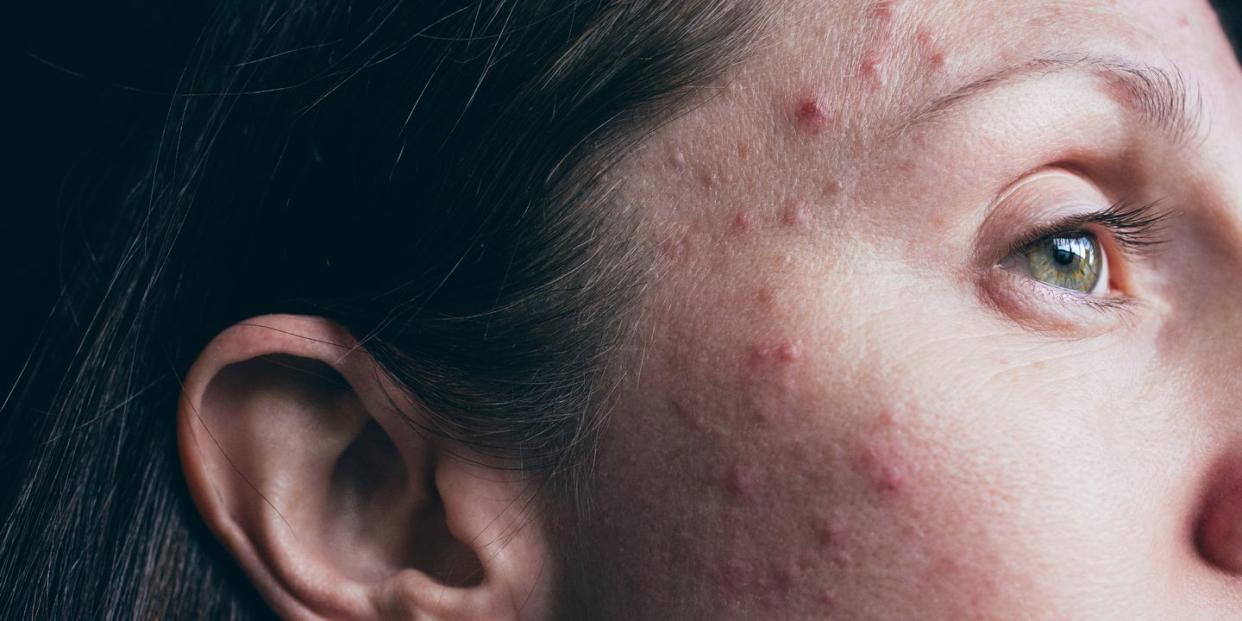Here's How To Tell If Your Skin Is Purging Or Breaking Out

Waking up to notice a few new blemishes on your skin has never been an ideal experience—especially when said blemishes show up shortly after trying a new skincare product. This typically happens for one of two reasons: your skin could be reacting negatively to anything like excess oil production, hormones, or fragrance in products and breaking out as normal or you could be experiencing skin purging.
Skin Purging: Skin purging generally refers to the skin having a reaction to either a change in climate or, more often, a new active ingredient (like retinol and exfoliating acid) that is increasing cell turnover
While "purging" isn't the most pleasant word to hear when it's associated with your skin, it’s important to know that skin purging isn't necessarily bad, and it’s not the same as a normal breakout—it’s actually a sign that your products are working.
Meet Our Experts: Joshua Ross, celebrity aesthetician and founder of SkinLab in Los Angeles, Edyta Jarosz, licensed aesthetician at Shafer Clinic in New York City
What Causes Skin Purging?
During a purge, the skin pushes all the excess oil, sebum, dead skin cells, and other debris to the surface to get rid of it—but all of that dirt can clog pores, leading to breakouts, says Joshua Ross of SkinLab in Los Angeles. “As skin cell turnover speeds up, the skin starts shedding dead skin cells faster than normal,” says Edyta Jarosz, licensed aesthetician at Shafer Clinic in New York City.
Think of purging as your skin's way of adjusting to the product: persevering with it may eventually improve your skin, and the sudden crop of pimples means that it’s working as intended.
What Does Skin Purging Look Like?
If your skin is purging, you’ll usually notice small, red pimples that may even feel uncomfortable to touch. You may also experience dryness, peeling, and irritation.
These types of breakouts should clear up sooner than a traditional breakout, and they should appear where you normally experience breakouts, though once the pimples are gone, you shouldn't expect for there to be any marks or scarring left behind.
Skin Purging vs. Breakouts
As Jarosz explains, a breakout happens when a hair follicle or pore gets clogged with dead skin cells, sebum, and possibly bacteria. “The pore’s contents later make their way up to the skin’s surface, resulting in a whitehead, a blackhead, or another form of acne,” she shares.
According to Ross, skin purging is easy to identify if you know you've have introduced a new product to your skincare routine recently. This likely means your skin is adjusting to the product. “A more random breakout is more likely hormonal or an allergic reaction to a product that could cause purging like moisturizer or sunscreen,” he shares.
Sometimes breakouts can occur in areas of the skin that you typically haven't experienced acne before, whereas with purging, “spots appear where you frequently get them, and they go away faster than a normal pimple,” Jarosz explains.
Can You Avoid Skin Purging?
To completely avoid skin purging, Jarosz says slowly introducing a new product into your routine to give your skin some time to adjust is ideal to avoid a breakout or purging.
“Before you choose a new product, always take a good look at the ingredients, and compare notes with other products that haven't worked so well for you in the past,” she explains. If you’re noticing that a product is causing new areas to break out and the severity does not lessen over time, it’s best to stop using it. This just means your skin is sensitive to a specific ingredient, and extended use can cause ever more damage.
“If you are using a product that's causing purging, you can use less or use it every other night until the skin has time to gently purge with fewer breakouts,” Ross explains.
How To Treat a Skin Purge
“It is important to wash your skin every morning and night to remove any debris, pollutants, makeup, and skincare residue that might clog your pores while the skin is purging,” says Jarosz. You should choose a mild, hydrating cleanser and avoid popping any of these pimples or touching your face excessively. “Do your best to avoid harsh chemicals or exfoliants,” she explains. Too much too quickly will only extend the purging process.
Ross recommends continuing to use the product that's causing the purging for four to six days until the skin cell turnover process has completed and the skin has gone through a full cycle of shedding to have time to release all of the trapped sebum. “Skin should tolerate the product well after purging has subsided,” he adds.
You Might Also Like

